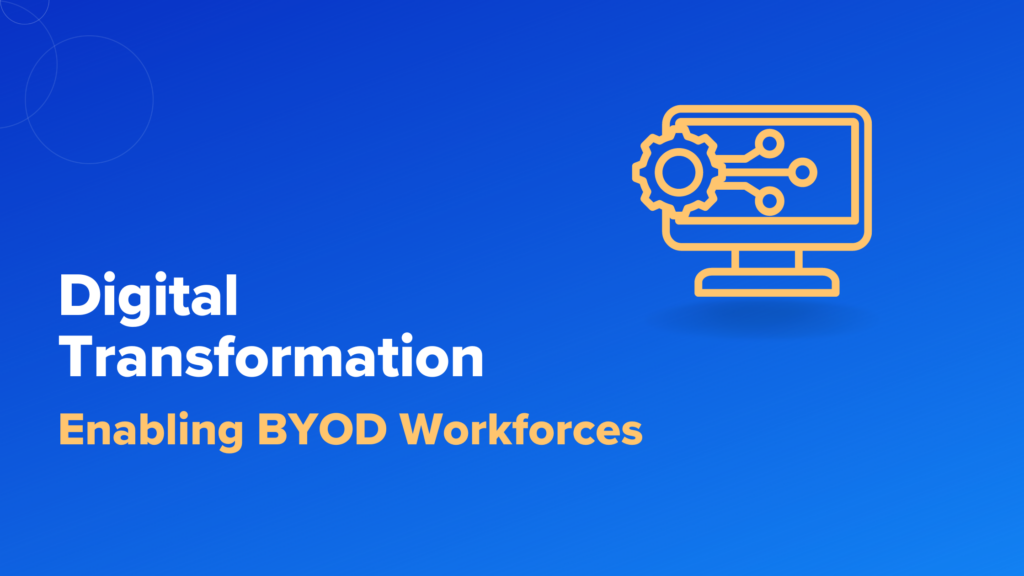There is a growing emphasis on remote work and BYOD policies in today’s workforce, pushing companies to undergo urgent digital transformation. Organizations need secure and efficient methods of accessing files, data, and applications that comply with data security and regulation requirements.
Until today, solutions like VDI and VPNs have presented partial solutions, but they come with high costs, high complexity, and limitations such as increased risk of data leaks.
Companies are looking for a better solution.
This blog post is based on the webinar, “Enabling BYOD Workforces and Digital Transformation,” which you can watch here.
A Change is Underway
61% of Gen Y and 50% of 30+ workers believe the tech tools they use in their personal lives are more effective and productive than those used in their work life, according to a report by Dell.
This trend, along with an increasingly remote, global workforce and the rise in contractors and freelancers, is causing a paradigm shift in which more employees are using their personal laptops for work.
While this presents new opportunities, it also presents new challenges.
Challenges of a BYOD Workforce
Enabling BYOD workforces decreases costs, minimizes IT overhead and stress, and improves the end-user experience.
However, it also means that IT teams must secure company data on unmanaged devices.
In the past, companies have used solutions like virtual desktop infrastructure (VDI), VPNs, and locked-down, company-owned laptops to address data security. But these solutions come with an array of issues, including:
- High costs that are rising still
- Performance and reliability issues like latency
- The need for constant maintenance and upkeep by IT teams
Additionally, these solutions tend to only partially solve an organization’s problems.
“If we allow a personal machine to have VPN, you almost have to look down the road of installing an end-point protection or EDR,” said Timothy Wachenfeld, Manager of Client Services at Just-Tech, in our recent webinar.
As the Manager of Client Services at the non-profit focused MSP, Timothy was searching for a solution that compared to VDI in securing personal machines but without the cost and complexity, which was when he found Venn.
Venn offers a new approach to securing BYOD workforces.
When comparing solutions like Venn, VDI, and VPNs, companies should take into account these 6 key considerations:
- Securing sensitive data, files, applications, and network access
- Maintaining compliance
- Controlling cost/complexity for IT
- Simplifying onboarding and offboarding
- Separating usage
- Ensuring convenience and privacy
A New Approach: Venn’s Blue Border
Venn’s Blue Border is revolutionizing how organizations secure their BYOD workforces.
Similar to an MDM solution but for laptops – work lives in a company-controlled Secure Enclave installed on the user’s PC or Mac, where business activity is isolated and protected from any personal use on the same computer. Work applications run locally within the Enclave – visually indicated by the Blue Border – isolating and protecting business activity from any personal use on the same computer.
In this way, Venn offers a completely new paradigm of securing BYOD workforces for organizations who have had enough of VDI and VPNs’ many pitfalls.
If you want to learn more about how Venn compares to VDI and VPNs, see our on-demand webinar here or book a short demo.



